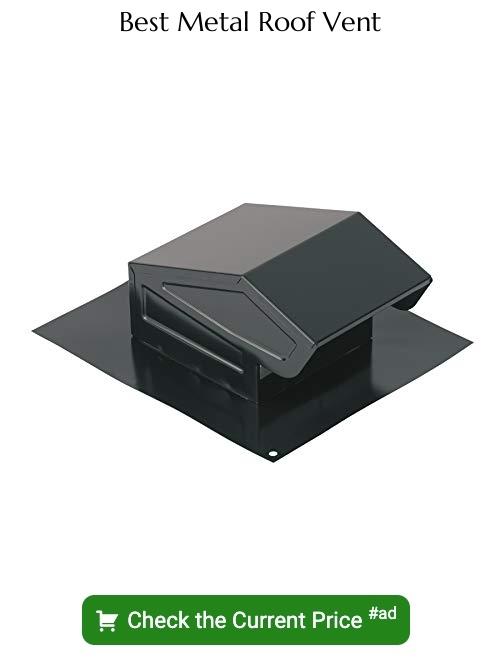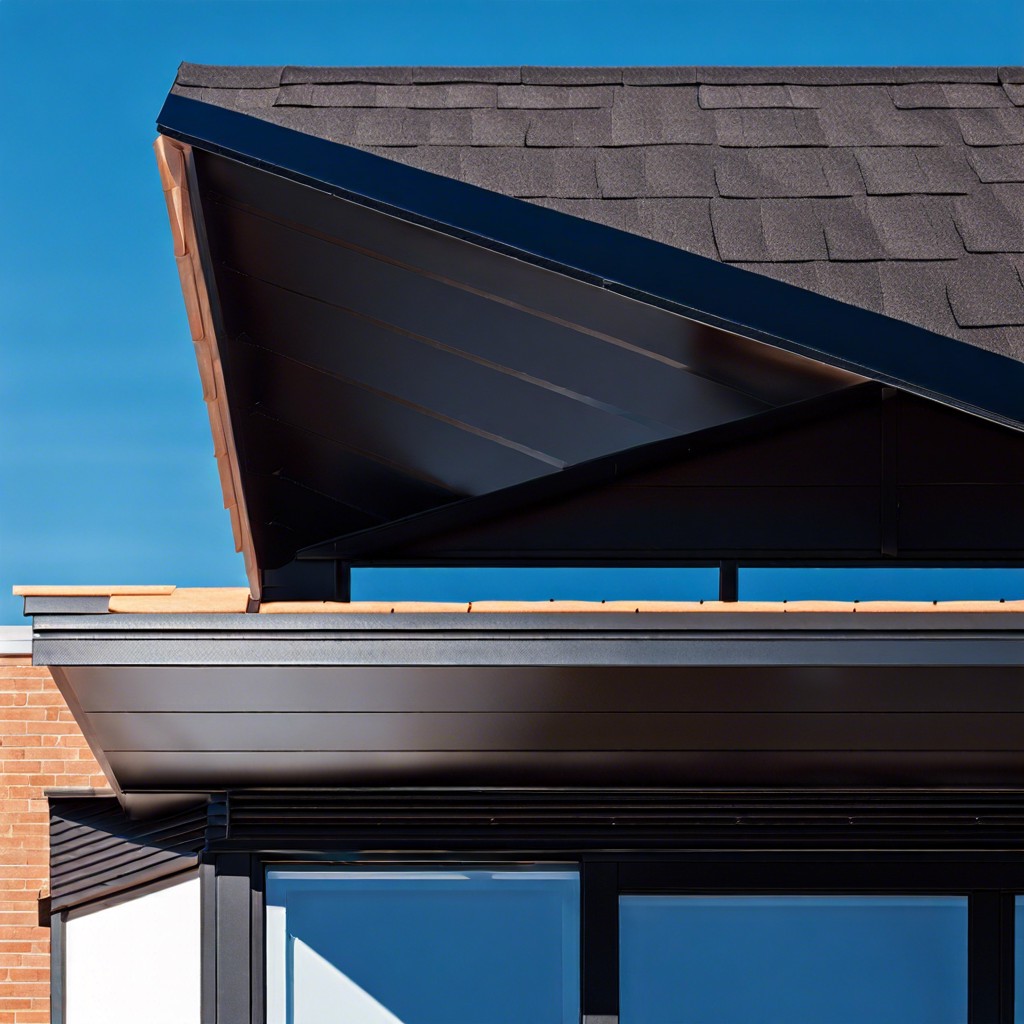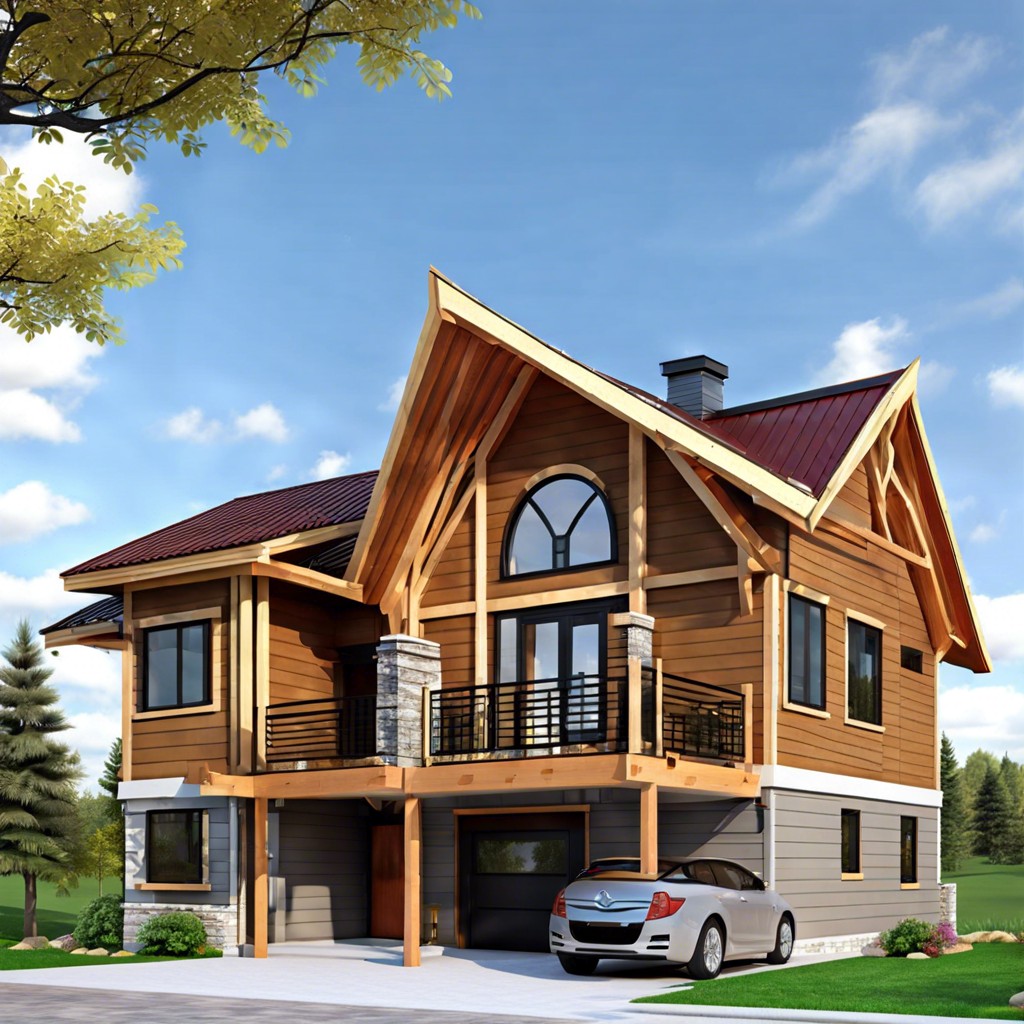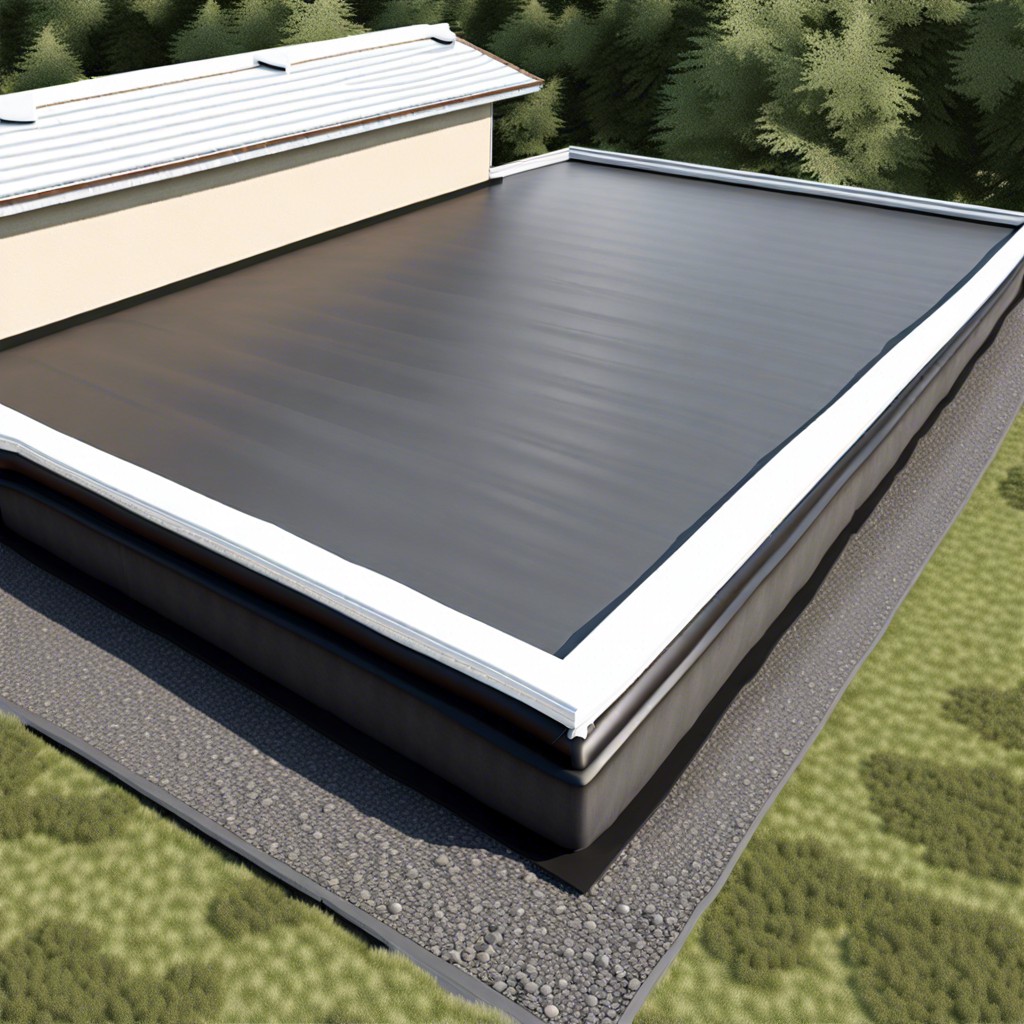Last updated on
Understanding the different types of metal roof vents is essential because it affects your home’s ventilation, energy efficiency, and overall structure integrity.
Key takeaways:
- Ridge vents: Natural ventilation, energy efficient, low profile, prolonged roof life, easy installation.
- Box vents: Simple design, no moving parts, easy installation, may require multiple units.
- Gable vents: Good for cross-ventilation, simple design, less effective in certain conditions.
- Soffit vents: Essential for airflow, various styles, durable, minimal maintenance.
- Turbine vents: Wind-driven operation, installation and maintenance, effectiveness dependent on wind.
Ridge Vents

Ridge vents run the entire length of the roof peak, blending into the roofline for a more attractive home exterior. They provide uniform cooling along the roof deck, installed at the ridge, allowing hot, humid air to escape from the attic. Here’s why they are effective:
- Natural Ventilation: Utilizing the natural rise of warm air to create a vacuum that pulls cooler air in from soffit vents and pushes the hot air out.
- Energy Efficiency: Reducing energy costs by minimizing the workload on air conditioning systems during hot weather.
- Low Profile: Their design makes them nearly invisible from the ground, maintaining the aesthetic appeal of the metal roof.
- Prolonged Roof Life: By preventing heat and moisture buildup, they extend the life of the roofing materials.
- Ease of Installation: Typically these vents are integrated into the roof’s construction, requiring no complex mechanics.
By enabling a continuous flow of air, ridge vents play a crucial role in maintaining an efficient and effective roofing ventilation system.
Box Vents
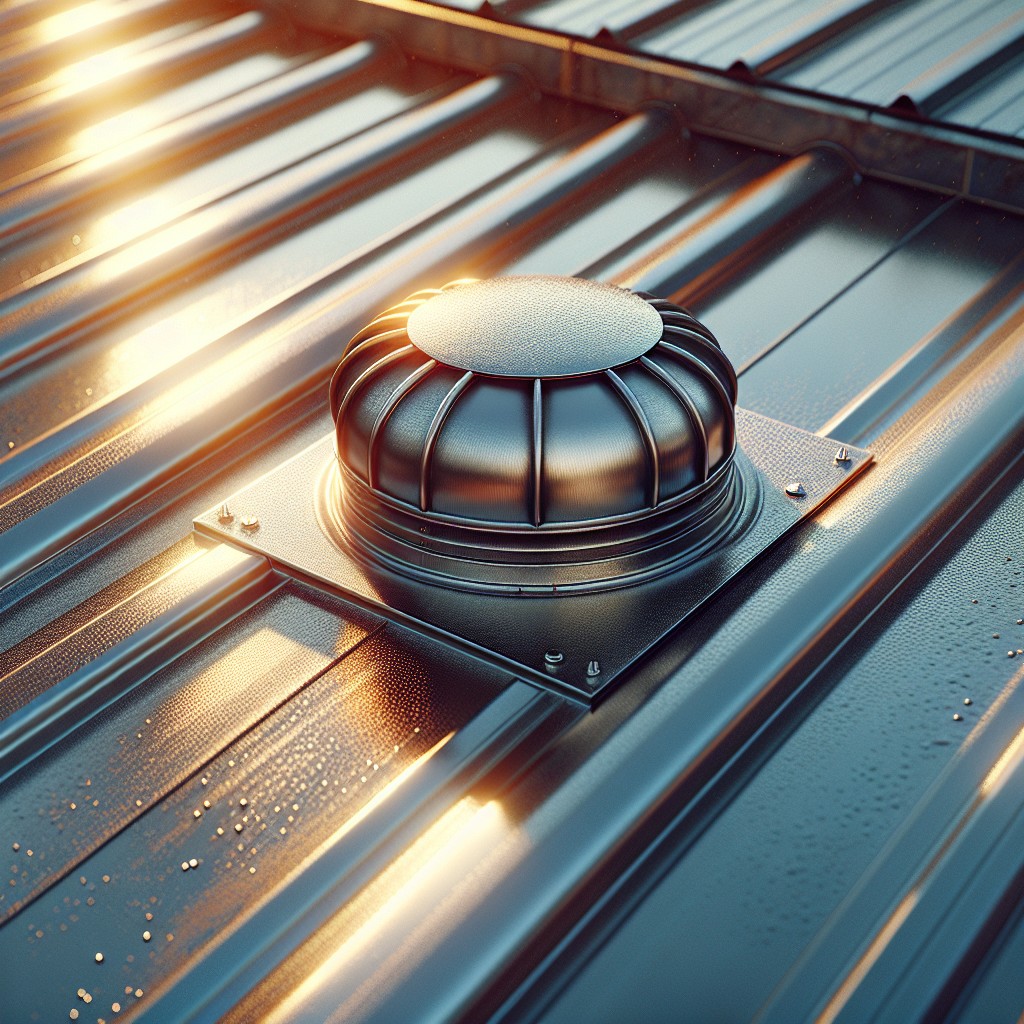
Installed near the roof’s peak, box vents are static ventilation devices requiring no power to function. They work optimally when combined with intake vents along the soffits, facilitating natural airflow through the attic.
Their effectiveness is largely dependent on proper placement and quantity, tailored to the attic’s size and design. Box vents are known for their durability and ease of installation on a metal roof, with a variety of materials and colors to match your home’s aesthetic.
Careful waterproofing is crucial during installation to prevent leaks, typically accomplished through the use of flashing and weatherproof sealants. Opting for these vents can be a cost-effective solution, aiding in extending the lifespan of your roof by reducing heat and moisture buildup.
Gable Vents
Installed at the peak of a gable end, these vents allow for cross-ventilation of an attic space, as they are typically placed on opposing sides of the building. They’re known for their simple design, which integrates well with a variety of architectural styles, and they do not require power to function.
Due to their static nature, they rely on wind for effective airflow. On days with little to no wind, performance may be limited. It’s important to ensure that they are adequately sized for the attic space they are meant to serve and that they are paired with a sufficient intake system, like soffit vents, to promote optimal air circulation.
Maintenance involves inspecting for blockages from nests or debris, as well as ensuring that screens are intact to prevent pests from entering. When retrofitting a metal roof with gable vents, correct flashing is crucial to prevent water infiltration.
Soffit Vents
Soffit vents are integral for maintaining airflow between the roof and attic. Positioned under the eaves, these vents allow for continuous intake of cool, fresh air, which is essential for proper ventilation. Typically, they work in tandem with ridge or other exhaust vents to create a natural flow of air that helps reduce moisture and manage temperature.
These vents come in various styles, including continuous and individual vents. Continuous soffit vents offer an unbroken line of airflow, while individual vents are spaced out along the soffit. They are often made of PVC or aluminum, materials chosen for their durability and resistance to rust or corrosion.
Installation is flush with the soffit, making them aesthetically unobtrusive. Because they are not exposed to weather elements as much as other types of vents, soffit vents require minimal maintenance. Importantly, their placement should be calculated based on the attic size and existing ventilation system to ensure balanced air intake and exhaust.
When properly installed, soffit vents can prolong the life of the roof by preventing the buildup of heat and moisture that can lead to roof decay and mold growth.
Turbine Vents
Turbine vents, also known as whirlybirds, harness wind power to create airflow within the attic space. They consist of a cylindrical dome with vanes that spin as the wind blows, effectively drawing warm, humid air out of the attic.
Here are some key points to consider:
- Wind-Driven Operation: These vents do not require electricity to function; they are entirely dependent on the wind, making them an eco-friendly option.
- Installation: Typically installed near the roof’s peak, turbine vents require precise placement to ensure they catch the wind and are sufficiently spaced to maximize airflow.
- Efficiency: They’re most effective in regions with consistent wind. In the absence of wind, however, they’re not as effective as other vent types.
- Durability: Made from lightweight aluminum or galvanized steel, they can last many years but may require maintenance to ensure they remain free-spinning.
- Aesthetics: Available in various colors, they can be selected to complement or match the metal roofing, though some homeowners may find them less attractive than other vent types.
Selecting a turbine vent for a metal roof involves considering local weather patterns and aesthetic preferences, as well as understanding the balance between efficient attic ventilation and external design.
Electrical Roof Vents
Equipped with motors, electrical roof vents are powered units that actively expel hot air from the attic. Unlike passive vents that rely on natural air flow, these devices create their own airflow to ensure consistent ventilation.
Several advantages include:
- Superior airflow: They can move a significant volume of air per minute, enhancing the overall effectiveness of your home’s cooling efforts.
- Humidity control: By actively removing moist air, they help in preventing mold growth and wood rot in the attic.
- Temperature regulation: These vents can reduce attic temperatures, which in turn can lower cooling costs and extend the life of roofing materials.
However, it is essential to consider:
- Energy usage: As they require electricity to run, they will increase your home’s energy consumption.
- Noise: The motor can produce noise, which may be noticeable in quiet environments.
- Dependence on power: During power outages, these vents will not operate, losing their venting capabilities until power is restored.
Installation requires a power source, so consider the logistics and cost of running electricity to the roof. When selecting an electrical roof vent, it’s critical to match the size and power of the unit to your attic’s square footage for optimal performance.
Off-Ridge Vents
Off-ridge vents are typically smaller than ridge vents and are installed directly on the roof deck, near the ridge. They work by allowing hot air to escape through individual openings, creating a continuous airflow from the soffit vents through the attic and out the off-ridge vents. These vents are often used when ridge vents are not practical or as an additional ventilation solution.
Key attributes include:
- Installation: Positioned just below the roof peak, requiring cutouts in the roof deck for each vent.
- Compatibility: Suitable for roofs with limited ridge length or homes where ridge vents may not be as effective.
- Aesthetics: Low-profile design minimizes visual impact on the roofline.
- Customization: Available in various sizes to accommodate different attic spaces and roof designs.
- Efficiency: They can be strategically placed to optimize air circulation based on specific attic requirements.
- Supplement: Often used in conjunction with other vent types to boost overall ventilation.
When installing off-ridge vents on a metal roof, it is crucial to ensure proper sealing and flashing to prevent water infiltration.
Solar-Powered Vents
Harnessing renewable energy, solar-powered vents offer an eco-friendly ventilation solution for metal roofs. These units convert sunlight into electricity to power a fan that enhances attic air circulation. The effectiveness of solar-powered vents is contingent upon the availability of sunlight, but they are specifically advantageous in sunny climates.
Key points to consider:
- Energy Efficiency: Operate without any cost post-installation, reducing overall energy bills.
- Environmentally Friendly: Reduce reliance on non-renewable energy sources and the home’s carbon footprint.
- Ease of Installation: Typically easier to install than traditional electric vents; no wiring necessary.
- Durability: Designed to withstand various weather conditions, with little maintenance required.
- Smart Operation: Some models are equipped with thermostats and humidistats, allowing for automatic operation based on specific conditions inside the attic.
- Adaptability: Can be installed on various types of metal roofs, including standing seam and corrugated panels.
- Potential Limitations: Performance can be limited during overcast days or in areas with less average sun exposure.
Determining the Appropriate Vent Type for a Metal Roof
Selecting the right vent type for a metal roof hinges on several factors. It’s crucial to assess the roof’s design, including pitch, shape, and size, as each vent type complements different architectural styles and functional requirements. Climate plays a significant role; for instance, ridge vents may be preferred in areas with heavy snowfall to prevent blockages, while soffit vents are ideal for constant under-eave air circulation. Additionally, local building codes may dictate specific ventilation ratios.
Energy efficiency is another important consideration. Vents like solar-powered options can offer savings on electricity while maintaining optimal airflow. Moreover, the aesthetics should not be overlooked; certain vents may be more visually appealing on a metal roof without compromising functionality.
A balanced vent system combining intake and exhaust will ensure efficient air movement. Professional roofing contractors can provide valuable insight into the most suitable ventilation system, ensuring it aligns with the roof’s structure, local climate, and energy goals.
Pros and Cons of Each Vent Type
Understanding the advantages and drawbacks of each vent type ensures an informed choice for your metal roof’s ventilation system:
Ridge Vents

Pros: Provide uniform cooling along the roof deck, low profile, and aesthetically pleasing.
Cons: May not provide adequate ventilation alone for larger attic spaces.
Box Vents

Pros: Simple design, no moving parts, and easy to install.
Cons: Multiple units may be required, may not be as effective in ventilating the entire attic.
Gable Vents
Pros: Can be used in combination with other vents for improved airflow, good for attics with peak roofs.
Cons: Less effective in homes without a clear path between gables.
Soffit Vents
Pros: Work in conjunction with ridge and gable vents for optimal airflow, and prevent moisture buildup.
Cons: Can be blocked by insulation, reducing effectiveness.
Turbine Vents
Pros: Use wind power for operation, reducing energy costs, and efficiently remove hot and moist air.
Cons: Can be noisy, and performance is dependent on wind.
Electrical Power Vents
Pros: Thermostatically controlled to run only when needed, effective in expelling large volumes of air.
Cons: Higher operating costs and may require professional installation.
Off-Ridge Vents
Pros: Easy to install and good for roofs that cannot accommodate ridge vents.
Cons: May require more units to achieve adequate ventilation.
Solar-Powered Vents
Pros: Energy-efficient, operates without added cost, and environmentally friendly.
Cons: Higher upfront cost and dependent on sunlight for operation.
By weighing these pros and cons against your specific needs, you can select the most suitable vent type for your metal roof.
FAQ
What vent to use on metal roof?
The most appropriate vent to use on a metal roof is a ridge vent, which is installed at the ridgeline and spans the entire roof to effectively ensure proper attic ventilation.
What is the best type of roof vent?
The best type of roof vent typically comprises soffit vents for intake and a ridge vent for exhaust, while box vents and fascia vents serve as second best alternatives for homes lacking these primary options.
Should metal roofs have ridge vents?
Yes, metal roofs should have ridge vents as they aid in the reduction of excessive heat and humidity thereby fostering longevity and less frequent maintenance.
Which is better static vent or whirlybird vent?
While both static vent and whirlybird vent have their merits, the static vent is a more reliable option because it lacks moving parts that can deteriorate and cause unpleasant noises, unlike the whirlybird vent.
How does the installation process of a roof vent on a metal roof differ from traditional roofing materials?
The installation process of a roof vent on a metal roof involves special procedures like pre-drilling holes and using rubber gasket screws for sealing, which is different from traditional roofing materials that typically require nails and tar for installation.
What role does climate play in the selection of roof vents for metal roofs?
Climate plays a significant role in the selection of roof vents for metal roofs as it determines the type of vent that will best handle regional weather conditions, from regulating moisture in humid climates to preventing snow accumulation in colder regions.
What are the pros and cons of using solar-powered roof vents on metal roofs?
Solar-powered roof vents on metal roofs are beneficial for their energy efficiency and cost-effectiveness, however, their performance may be hindered by weather changes and they require ample sunlight for optimal functionality.
